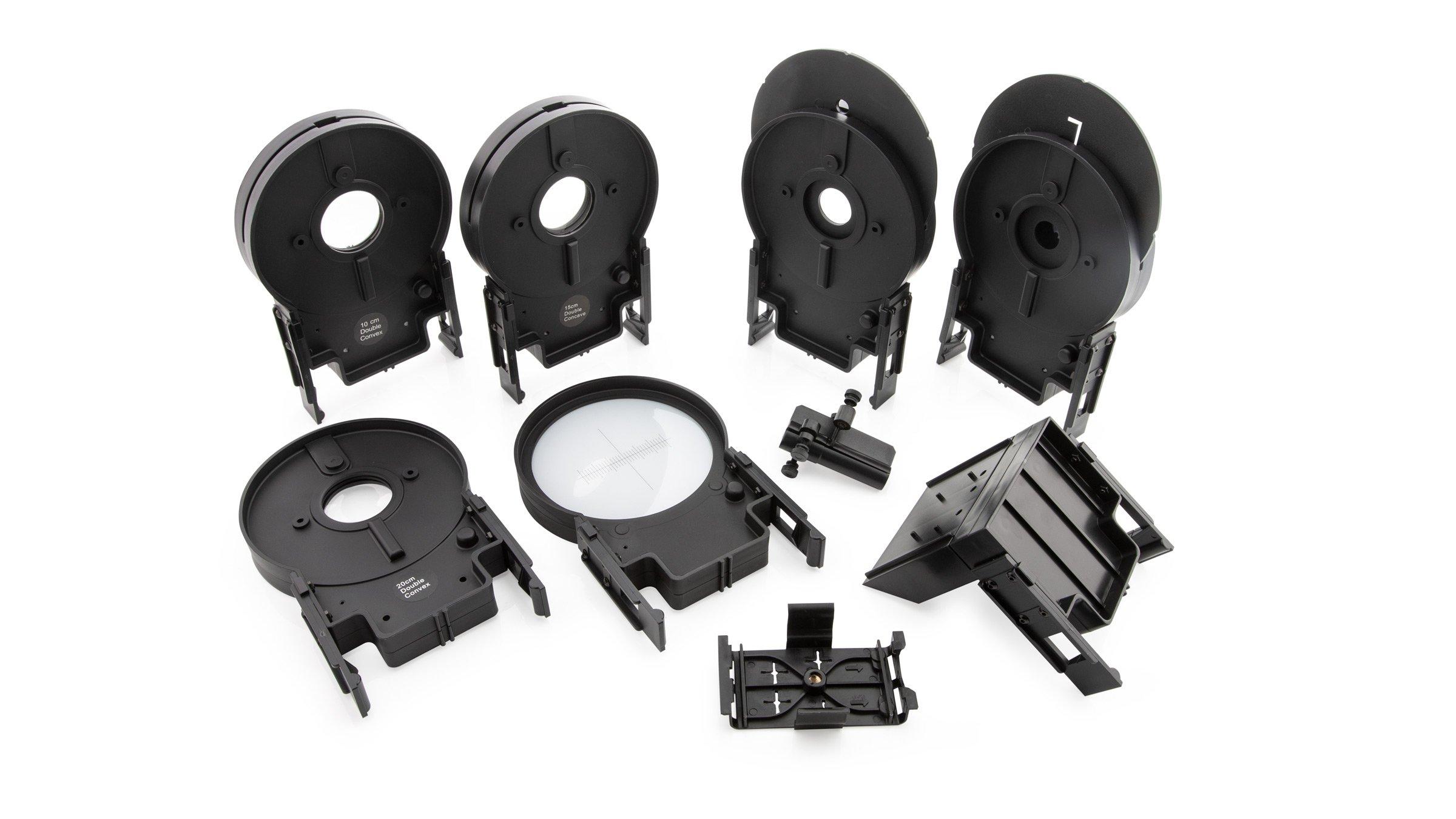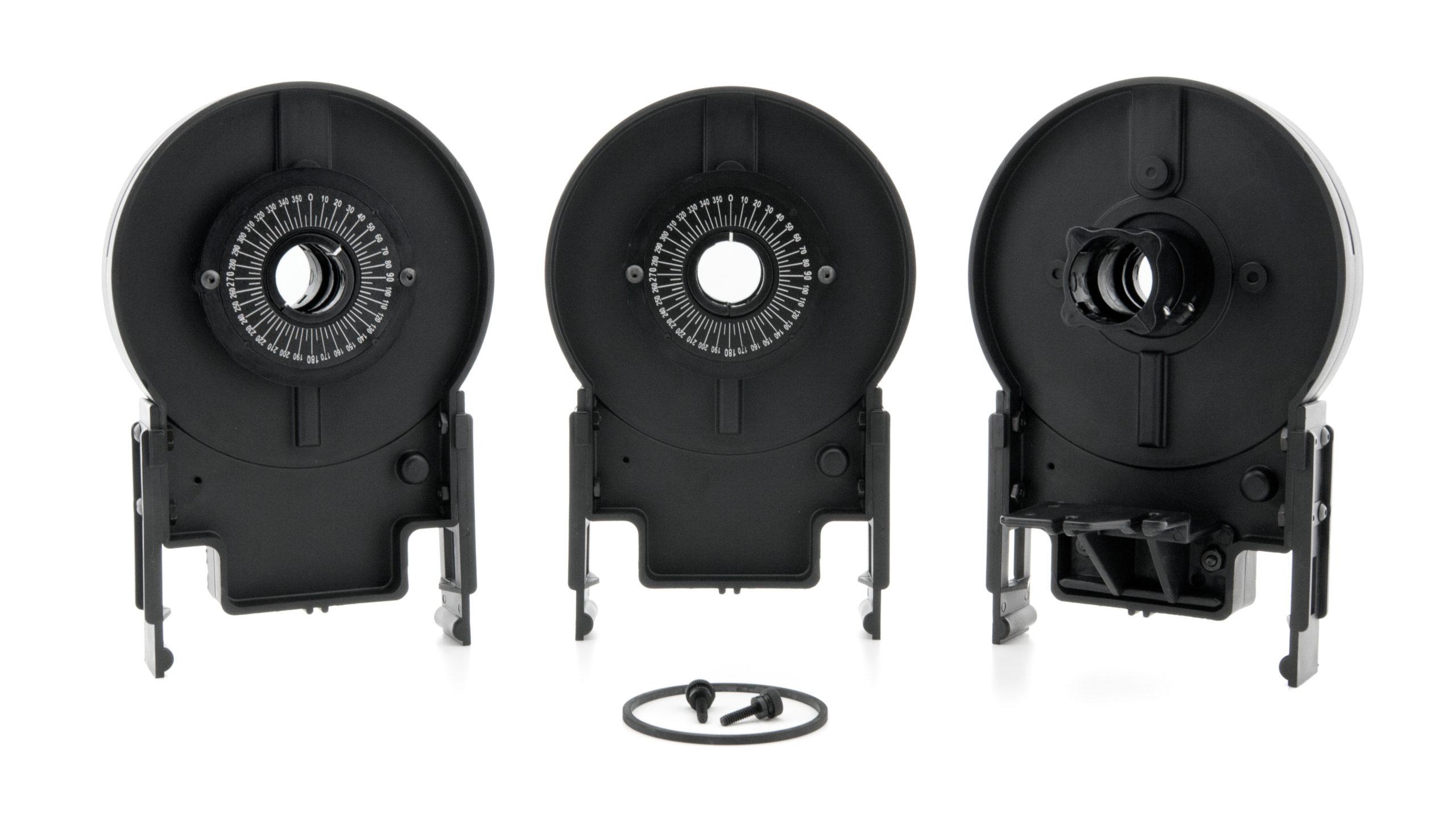
Introduction
Perhaps you have seen a display of polarized sunglasses in a store. You can quickly test to see if the glasses are really polarized by looking through the lenses of two glasses and rotating one pair by 90º. If both pairs of glasses are polarized, the lenses will appear to go black. Why is that?
To explain the darkened lenses, we need to think of the light as an electromagnetic wave. An electromagnetic wave has varying electric and magnetic fields perpendicular to the direction the wave is traveling. This experiment focuses only on the electric field variation, represented by a vector. Light emitted from a typical source such as a flashlight is randomly polarized, meaning that the electric vector points in varying directions.
An ideal polarizing filter will remove all but the electric fields that are parallel to the axis of the filter. The light remaining is then said to be polarized. A second filter can be used to detect the polarization; in this case, the second filter is called an analyzer. The transmission through the second filter depends on the angle between its axis and the axis of the first filter. In this experiment you will study the relationship between the light intensity transmitted through two polarizing filters and the angle between the filter axes.
In the 1800’s Malus proposed a law to predict light transmission through two polarizing filters. The relationship is
I = I0cos2θ
where I0 is the intensity when the angle θ between the polarizer axes is zero. In this experiment, you will see if this law is useful in describing your polarizing filters.
Objectives
- Observe the change in light intensity of light passing through crossed polarizing filters.
- Measure the transmission of light through two polarizing filters as a function of the angle between their axes and compare it to Malus’s law.
Sensors and Equipment
This experiment features the following sensors and equipment. Additional equipment may be required.
Ready to Experiment?
Ask an Expert
Get answers to your questions about how to teach this experiment with our support team.
- Call toll-free: 888-837-6437
- Chat with Us
- Email support@vernier.com
Purchase the Lab Book
This experiment is #28B of Physics with Vernier. The experiment in the book includes student instructions as well as instructor information for set up, helpful hints, and sample graphs and data.







